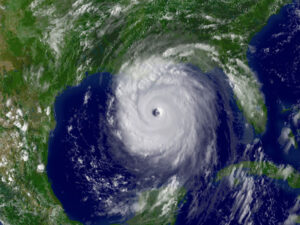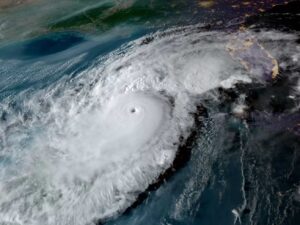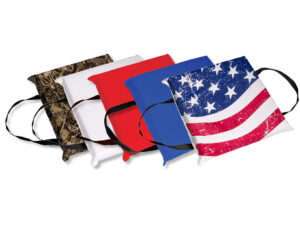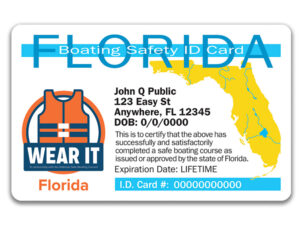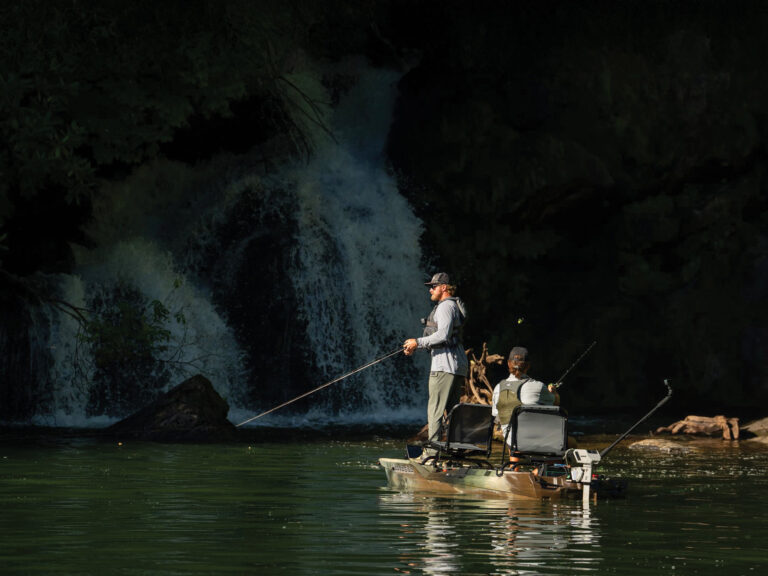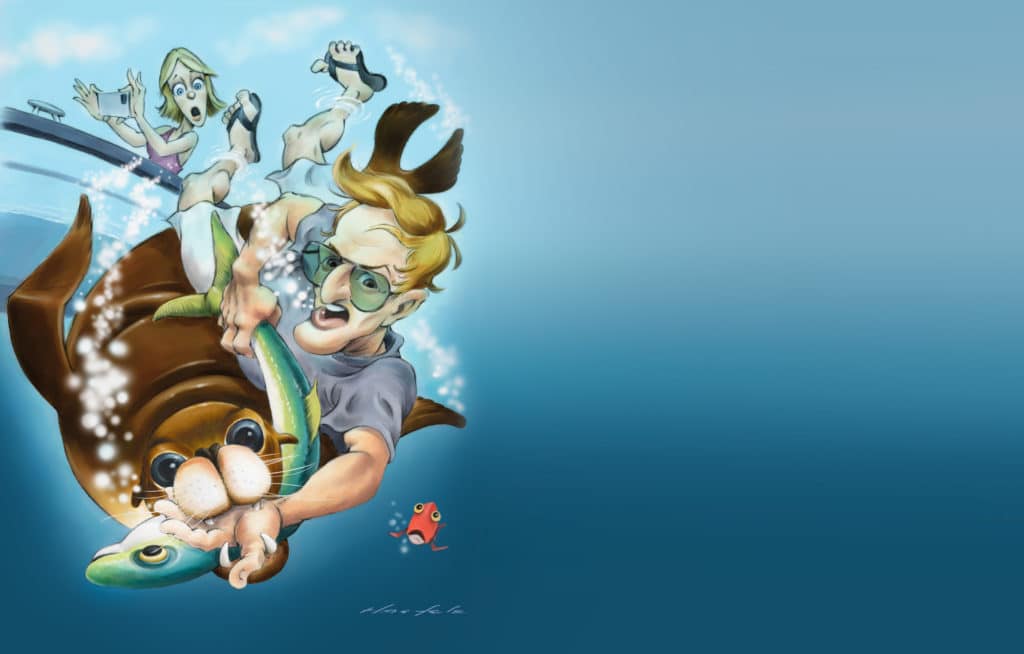
Rest assured that no sea lions were harmed in the development of this story. But that’s not by choice.
It’s the law, and therein lies one big problem with California sea lions: You can’t get rid of them. Their numbers are exploding. And they can harm you.
Just ask Don Carlin. In April 2015, Carlin was posing for a photo with a proud catch while on his boat in Mission Bay, California. As his wife, Trish, snapped a shot, a sea lion leaped into the boat and bit into the hand with which Carlin was cradling the fish.
The sea lion dragged Carlin overboard and held him underwater for 15 seconds before relinquishing its grip. Then as the angler swam back to his boat, the sea lion returned to inflict a bite on Carlin’s foot, piercing a bone. Carlin spent two days in the hospital, where he required a strong dose of antibiotics and 20 stitches to close the wounds on his hand.
Now do you understand why I hate sea lions?
I’m not alone. The I-hate-sea-lions club is made up largely of boaters and anglers, but there is a growing number of others who disdain these pinnipeds.
Before I go on, let me set the stage.
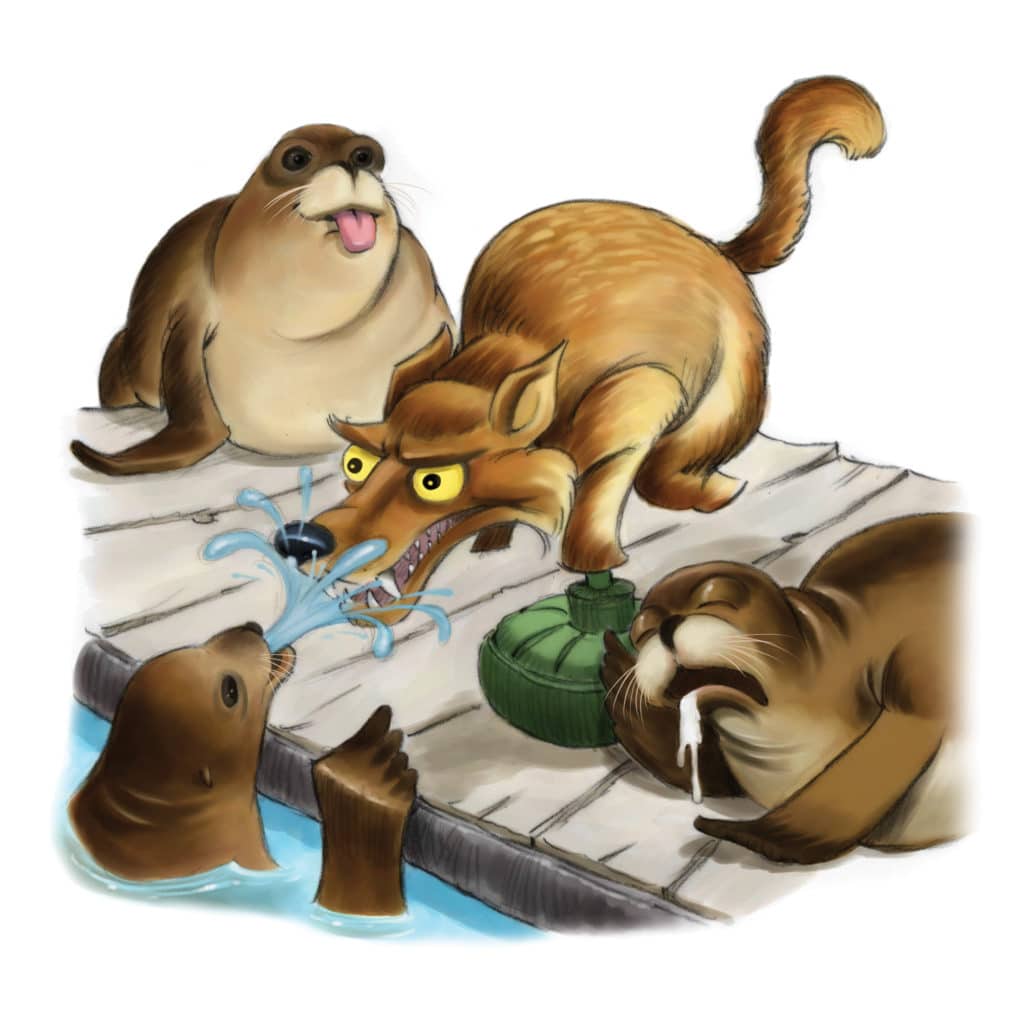
Biped vs. Pinniped
Humans and California sea lions have been at odds ever since man reached the West Coast of North America where these wily creatures make their home.
Native hunters killed sea lions for fur, oil and food, but barely dented the population.
All that changed once Europeans reached the West Coast en masse in the 19th and 20th centuries, undertaking commercial harvest of marine mammals in these waters, including sea otters, seals, sea lions and whales. As technology advanced, so did the decimation, with the populations of some marine mammals dwindling to dangerously low levels.
To stem the losses, the federal government enacted the Marine Mammal Protection Act in 1972, offering blanket protection for all marine mammals, including sea lions.
Exploding Population
Populations of many marine mammals have rebounded during the intervening 45 years, but none more so than the California sea lion. It’s difficult to count the growing number of sea lions along the West Coast, so researchers instead count the number of pups born at established sea lion rookeries during the breeding season each year. This serves as an indicator of population trends.
In the mid-1970s, researchers counted about 12,000 pups born each year. Though there are have been ups and downs in the birth rate, pup counts have increased at an average annual rate of 5.4 percent between 1975 and 2008, according to one study by the National Marine Fisheries Service. By 2011, the pup count soared to well over 60,000. Overall, current population estimates hover around 240,000 California sea lions.
In a marine ecosystem unaffected by mankind, sea lion populations are held in check by great white sharks. Unfortunately, great whites suffered from overfishing in the 1970s and ’80s. However, recent evidence indicates that great white sharks, which were afforded California state protection in 1994, might be on the rebound.
In the meantime, the California sea lion population continues to escalate.
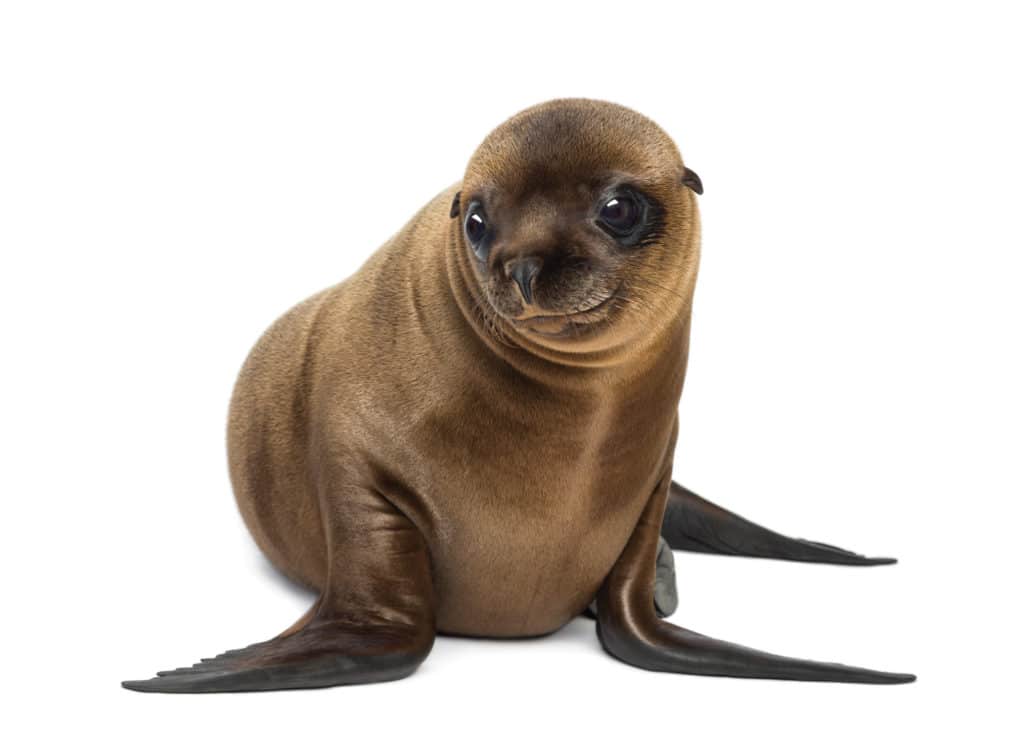
Cute and Smart
General public support for the MMPA is strong. Protecting endangered whales is a noble cause. But do sea lions — which are now far from endangered — still need protection under the MMPA?
Representatives of NOAA Fisheries, which oversees the MMPA, declined to answer that question, but they did say that the major reason for the brimming numbers of California sea lions is the MMPA.
Eliminating federal protection for the cute, bewhiskered, doe-eyed California sea lion represents a political hot potato. After all, these are the same lovable animals trained to balance beach balls on their snouts, applaud with their front flippers and bark for a treat. Media coverage of sea lions is overwhelmingly positive. Sea lions are also extremely intelligent animals, capable of learning circus tricks and, when left to their own devices, adapting their behavior to exploit human activities. This, combined with sheer numbers, often puts sea lions in direct conflict with boaters, anglers, marina dwellers and waterfront residents.
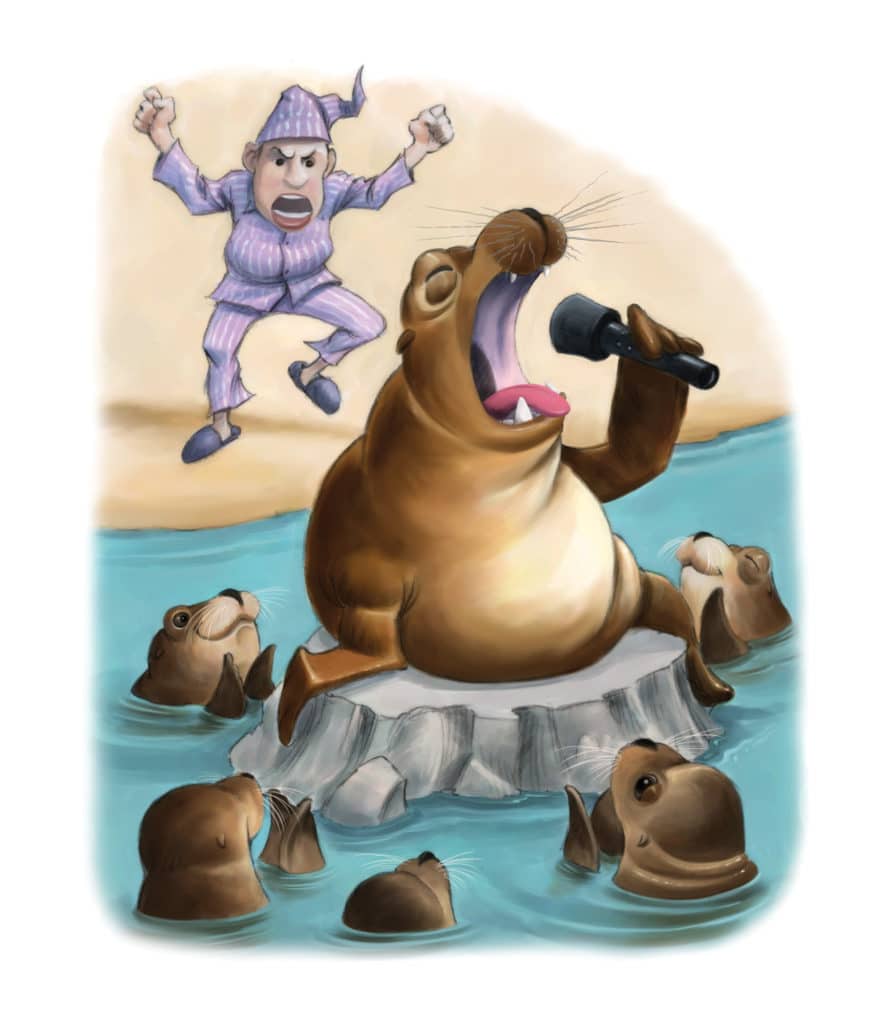
Noisy Nuisance
Detractors are not limited to mariners. In some locales, California sea lions generate so much noise that it’s difficult to sleep. Let’s start with the Hampton Inn and Suites in Astoria, Oregon, which is situated on the southern bank of the mighty Columbia River. It overlooks a quaint harbor where a small colony of sea lions has taken up residence. That’s not terribly disconcerting until you realize that sea lions are among the most vocal of all animals.
The males bark loudly and incessantly through the night, prompting the hotel to post notices to guests in the lobby and hand out free earplugs upon check in. One sleepless night is liable to convert the most fervent believer in the MMPA to a bona fide member of the I-hate-sea-lions club.
Stench, Stains and Damage
This is just one example of sea lions turning an otherwise peaceful waterfront into a deafening cacophony of barks and bellows. Consider the toney seaside town of Newport Beach, California.
Homes on the shores of the city’s Newport Harbor can be worth hundreds of millions of dollars, but that doesn’t make this area immune from the noise, stench and damage wrought by California sea lions. The pinnipeds have learned to use docks, transom platforms, and even the cockpits and bow decks of some boats to haul out. Sea lions and their waste possess an offending stench that would gag a sewer rat, and that can make life unbearable for liveaboards in West Coast marinas. It prevents many waterfront residents from opening their doors and windows to enjoy the sea air, such as it is.
That’s not the worst of it. Bull sea lions — known locally as “knotheads” due to the distinctive domes on their foreheads — can measure 7 feet in length and weigh as much as 1,000 pounds. That alone can deflect the end of a floating dock or strain a transom platform. But sea lions are highly social creatures, and so they often haul out in groups that huddle for comfort.
That kind of weight submerges docks and sinks small boats. Their fur also contains oils that discolor gelcoat so badly that boaters can’t remove the stains.
Recently, the Newport Beach Harbor Department began deploying on docks and transom platforms menacing-looking coyote decoys with furry tails that move in the wind. The hope is that these yellow-eyed, toothy coyote replicas will send the sea lions looking elsewhere for haul-out spots.
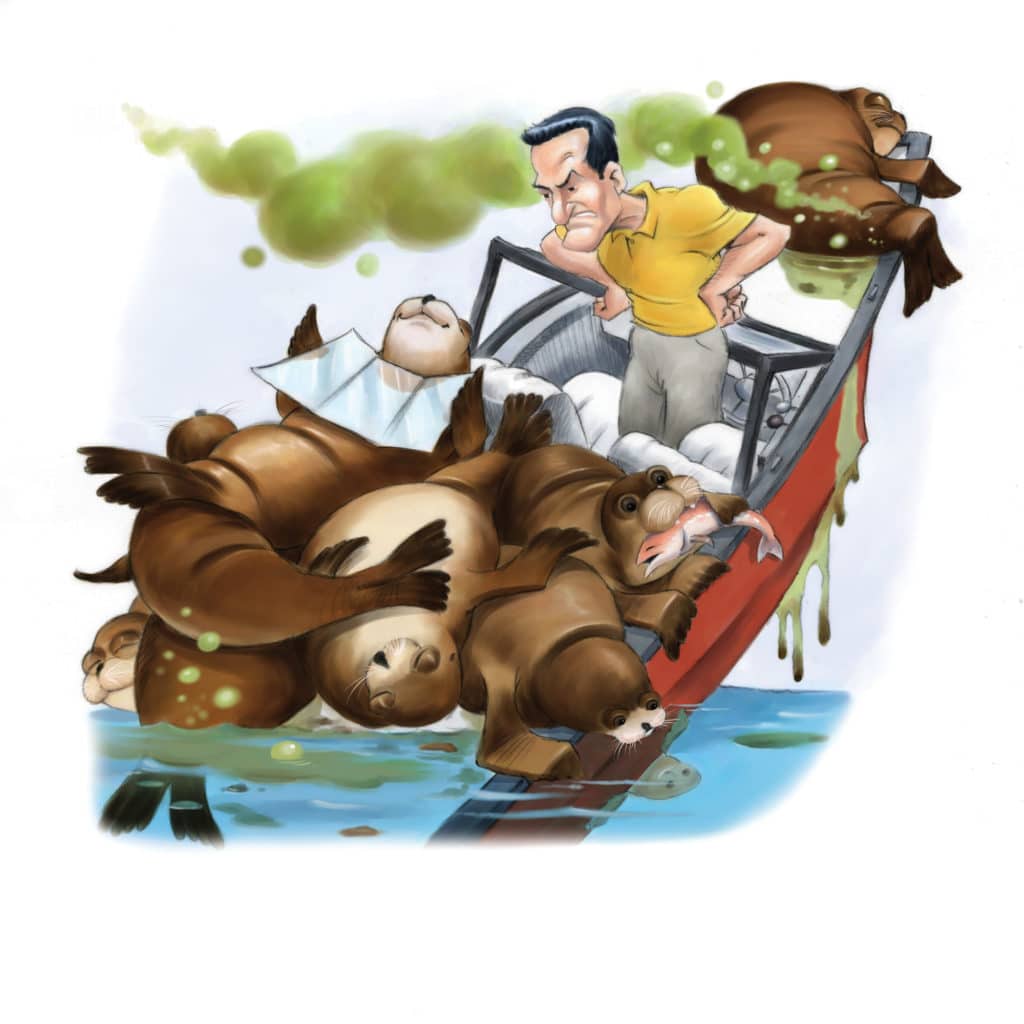
Attack Mode
A video that was shot in British Columbia, Canada, in 2016 but went viral last year shows a bull California sea lion snatching a young girl from a dock and dragging her underwater to the horror of her family and onlookers. She was quickly rescued by her father, who jumped in to retrieve his daughter.
To those familiar with California sea lion behavior, such an attack was not surprising, especially for animals that become habituated to humans who, intentionally or not, provide food to sea lions. Primary offenders are uninitiated tourists who view sea lions as cute and cuddly.
Then there’s the inadvertent feedings. A classic example emerged in another viral video shot at the marina in Cabo San Lucas, Mexico. A sea lion leaps over the transom to grab a large mahi from the hands of an angler as he’s posing for pictures. The angler was fortunate that the sea lion did not also grab him in the process like the one did with Don Carlin.
Ramp Tyrants
Boat-launch ramps in Southern California represent another place where sea lions hang out for incidental feedings when anglers empty their livewells after a day of fishing. At the Shelter Island launch ramp in San Diego Bay, a particularly aggressive old bull sea lion harasses boaters as they return and tie up at the courtesy docks.
Wise boating anglers have learned to empty their livewells beforehand and keep the catch stashed in fish boxes and coolers until the boat is on the trailer, lest the old knothead jumps aboard to pillage and plunder. Still, this sea lion has been known to chase trailer boats, waddling onto the pavement while on the hunt for a meal. The Shelter Island launch ramp closed for renovations this winter. Whether this aging raider returns or not remains to be seen.
Ramps and marinas aren’t the only places where sea lions steal fish. Perhaps the most emotional confrontations occur when a West Coast angler hooks a fish such as a yellowtail, salmon or white seabass — perhaps the fish of lifetime. Yet a hooked fish makes for easy pickings for California sea lions, which have learned to hang out around sport-fishing boats, waiting for someone to bend a rod.
Few events are more disheartening to an angler than hooking a big fish only to have a sea lion zoom in to cash in on your good luck. Sometimes you can land the fish by pulling hard with heavy tackle, but many times the swift, agile and hungry sea lion prevails. You’re left to stew as the animal surfaces with your fish and devours it before your eyes.
Salmon Issues
West Coast fishery managers face similar issues with sea lions that gather at the tailrace of dams such as Bonneville Dam on the Columbia River, where salmon and steelhead trout stage before continuing their upriver migration using fish ladders and other bypass systems en route to spawning grounds and hatcheries.
The salmon and trout are easy to catch as they pile up at such choke points to wait their turn. A group of sea lions can fairly devastate a run, and that’s a concern when certain runs of salmon and steelhead are protected under the federal Endangered Species Act.
In 2015, 264 California sea lions were observed feeding on salmon and trout in the tailrace of Bonneville Dam, 127 percent more animals than the previous high of 116 sea lions observed in 2010. During the spring of 2015, sea lions consumed 10,859 salmon and trout at the base of the dam, representing 4.3 percent of the migrating fish.
To help control and deter predation by sea lions at these locations and elsewhere, the Oregon and Washington state departments of fish and wildlife gained authorization to trap and remove 92 of the California sea lions, but were able to remove only 32 of them.
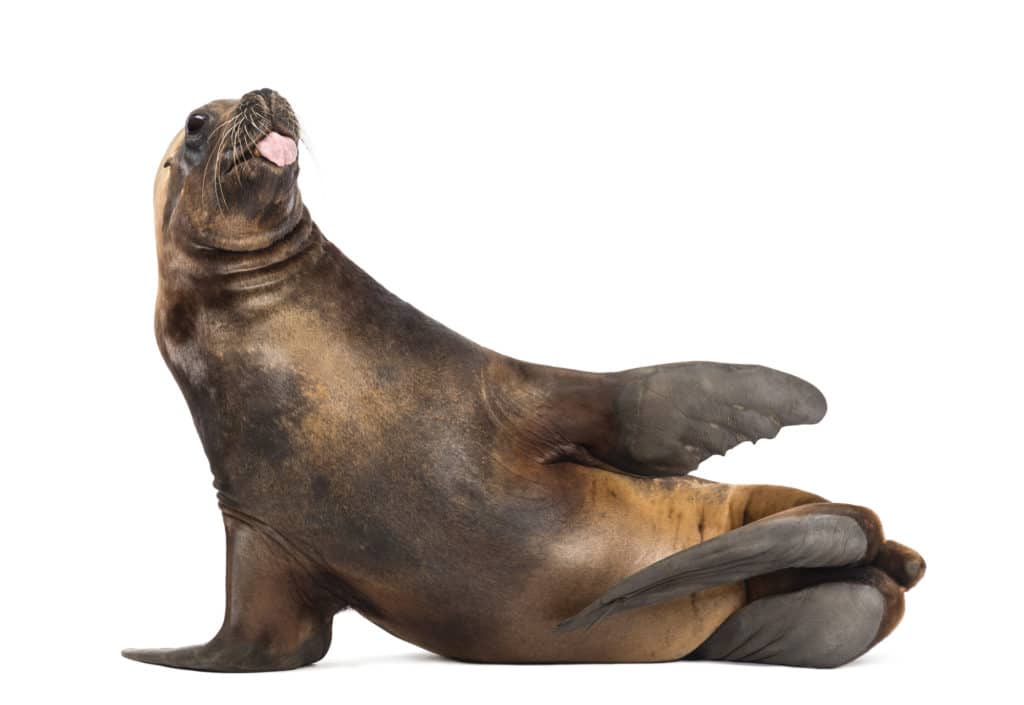
Legal Deterrents
Unfortunately, sport fishermen and other citizens don’t have the authority or means of removing offending sea lions, though you can report problematic animals to your state’s department of fish and wildlife for investigation and possible removal.
In addition, the MMPA was amended in 1994 to allow for the use of nonlethal deterrents to discourage sea lions from engaging in problematic behaviors.
What does that mean? Legal deterrents include visual, audio and physical techniques. On the visual side, NOAA points specifically to boat hazing and circling without striking the animal. Noise deterrents outlined by NOAA include pounding on the hull; pyrotechnics such as bird screamers and underwater firecrackers (known as seal bombs); starter pistols; and horns, bells and whistles.
Physical contact deterrents allowed by NOAA include slingshots, water-soluble paintball guns, and nonlethal ammunition like rubber bullets, sabot rounds and game stingers. NOAA frowns on automatic discharge due to the increased risk to the public.
No live ammunition, sharp projectiles, gaffs, spears, harpoons, nets or poisonous baits may be used.
To use any of the legal deterrents, anglers must be actively fishing with gear deployed, and a sea lion needs to be displaying problematic behavior, such as chasing a hooked fish. Discharge of firearms is prohibited within most local jurisdictions. So you can’t shoot rubber bullets at a problematic sea lion in a marina or on your dock.
Even where firearm discharge is allowed, down-range awareness is a critical factor, especially when using rubber bullets with a firearm. The rounds can ricochet off the water’s surface and strike another boat and its occupants.
Despite growing membership in the I-hate-sea-lions club, the problems brought about by too many of these prolific pinnipeds are here to stay. The only hope is that the population of great white sharks continues to grow along the West Coast and the natural order is restored.
Hey, Sharkie, the sea lion buffet is open for business.

